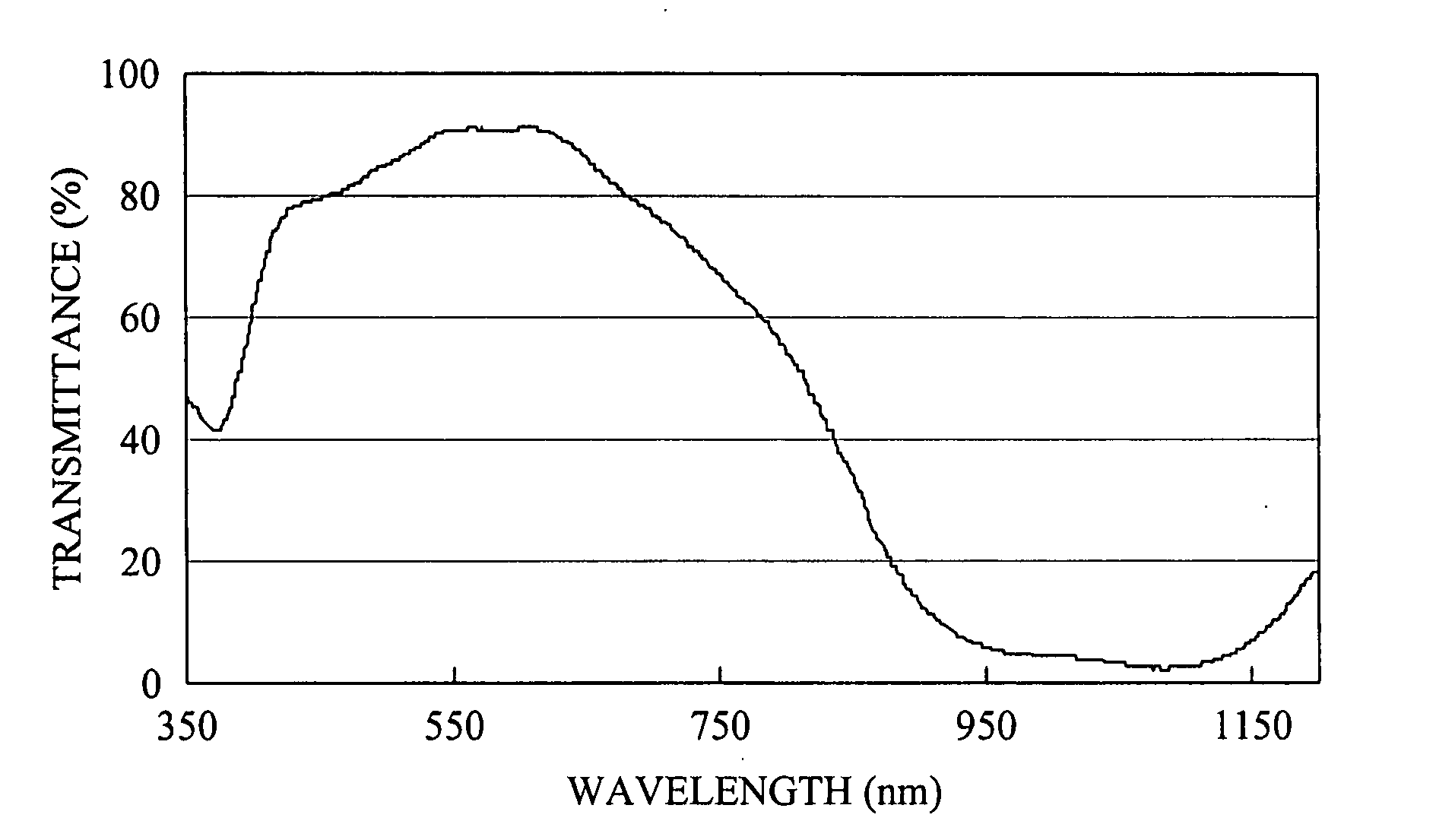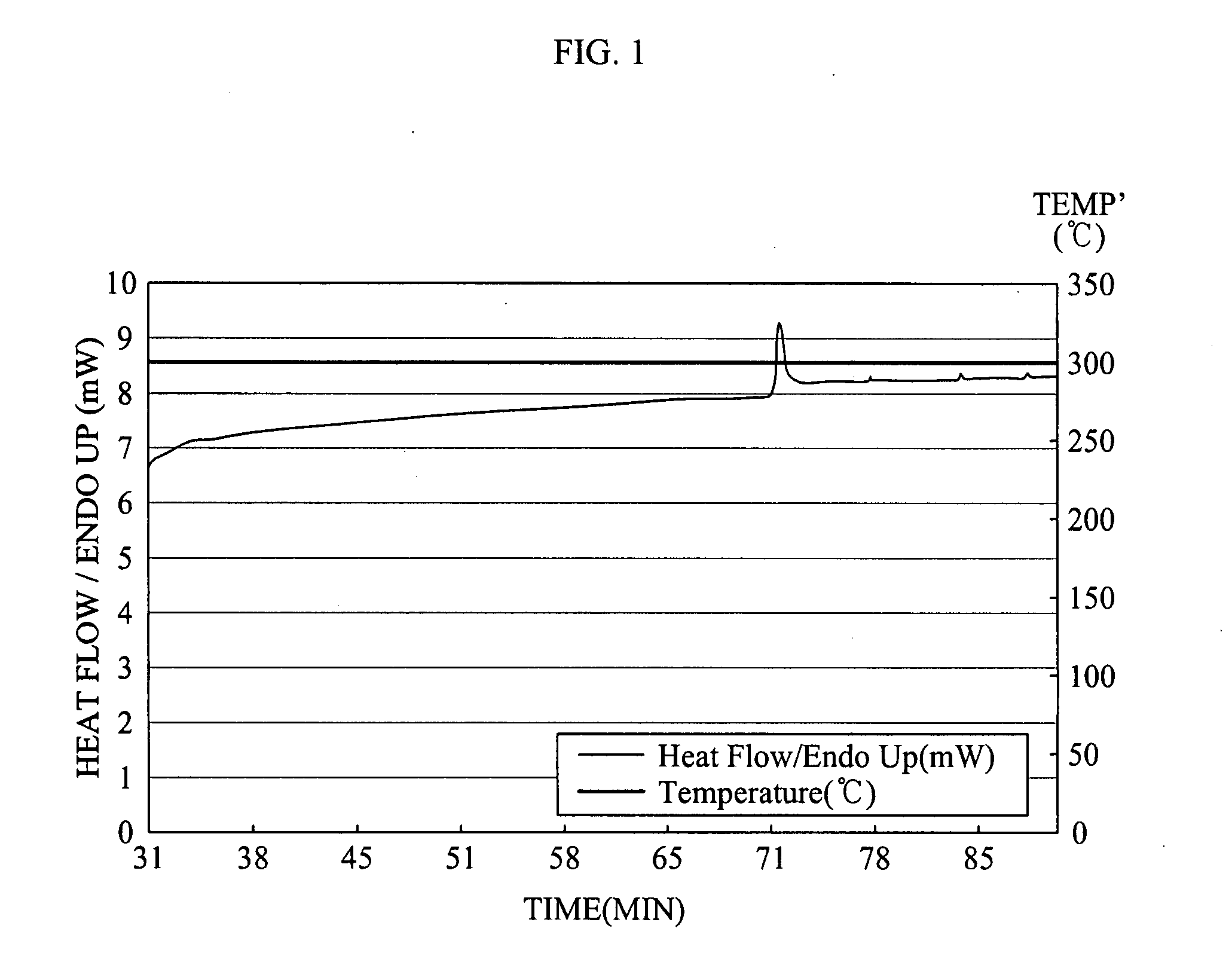Functional film composition for display
a technology of functional film and composition, applied in the direction of lighting and heating apparatus, instruments, spectral modifiers, etc., can solve the problems of affecting the function of display apparatus, affecting the appearance of display apparatus, etc., and achieve excellent electromagnetic wave shielding function.
- Summary
- Abstract
- Description
- Claims
- Application Information
AI Technical Summary
Benefits of technology
Problems solved by technology
Method used
Image
Examples
example 1
[0050] A CIR-based pigment, that is, CIR 1085 (manufactured by Japan Carlit Co., Ltd.) was fed into a differential scanning calorimeter (DSC), durability of the pigment was measured at a relatively high temperature of 300° C. for 30 minutes. As can be seen in FIG. 1, the pigment was melted at the temperature of 300° C. as time passes, however, a relatively great change was not seen for 30 minutes.
[0051] Also, in order to verify whether the pigment can be used after heat-treating, the pigment was left at room temperature for a predetermined time period, and dispersed in organic solvents (MEK, MIBK, toluene, and the like). Next, in order to verify absorption by the pigment for an inherent wavelength of the pigment, transmittance of the pigment was measured by using a spectrum. As can be seen in FIG. 2, light transmittance of the pigment was less than 10% in a range of about 900 to 1,200 nm after heat-treating at the temperature of 300′.
example 2
[0052] Example 2 was performed in the same manner as Example 1, except that a TAP-based pigment, that is, TAP-2 (manufactured by Yamada Chemical Co., Ltd., Japan) was used instead of CIR 1085 described in Example 1.
[0053] As can be seen in FIGS. 3 and 4, the TAP-based pigment was also melted at the relatively high temperature of 300° C. as time passes, however, a relatively great change was not seen for 30 minutes. It was certified that absorption of the pigment was seen in a range of 580 to 610 nm after heat-treating.
example 3
[0054] 100 parts by weight of a polyethylene terephtalete resin having an inherent viscosity of 0.62 dl / g, 10 parts by weight of a pigment for shielding a near-infrared ray of CIR 1085 (manufactured by Carlit Co., Ltd., Japan), and 8 parts by weight of a TAP series-based pigment (manufactured by Yamada Chemical Co., Ltd., Japan) were fed into a twin screw extruder, melt-extruded from a T-die at a temperature of 280° C. for 30 minutes, and then the extruded sheet was closely adhered to and solidified on a rotary cooling metal roll while applying static electricity to produce a non-drawn sheet.
[0055] Next, the non-drawn sheet was heated to 90° C. and longitudinally drawn at a ratio of about 3 to 4 times by using a roll drawing machine. Then an acrylic resin, a melanin resin, and a polyester resin were coated on both surfaces of the longitudinally drawn sheet, so that a coated amount thereof is 0.5 to 1 g / m2 after drying, passed through under a condition of wind speed 10 to 15 m / sec, ...
PUM
 Login to View More
Login to View More Abstract
Description
Claims
Application Information
 Login to View More
Login to View More - R&D
- Intellectual Property
- Life Sciences
- Materials
- Tech Scout
- Unparalleled Data Quality
- Higher Quality Content
- 60% Fewer Hallucinations
Browse by: Latest US Patents, China's latest patents, Technical Efficacy Thesaurus, Application Domain, Technology Topic, Popular Technical Reports.
© 2025 PatSnap. All rights reserved.Legal|Privacy policy|Modern Slavery Act Transparency Statement|Sitemap|About US| Contact US: help@patsnap.com



